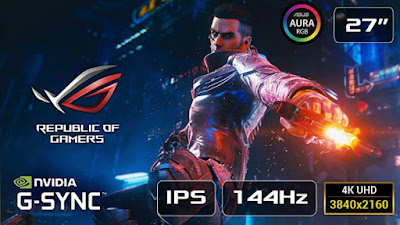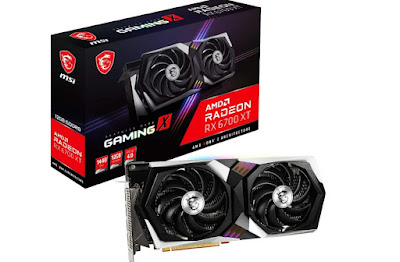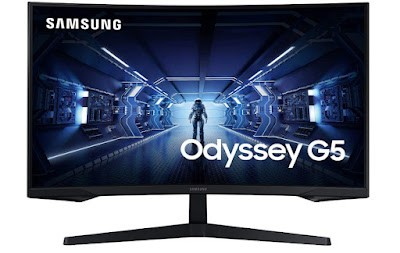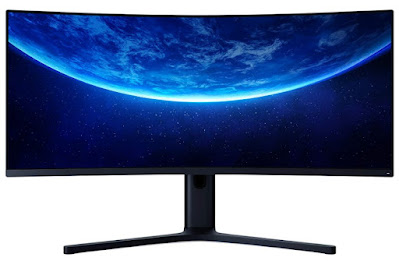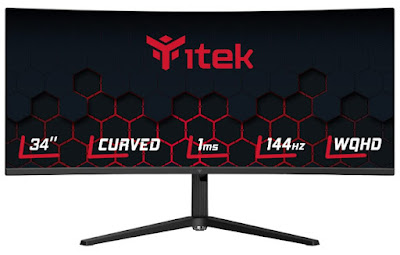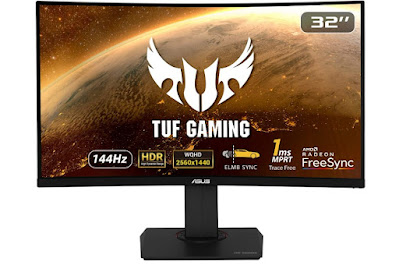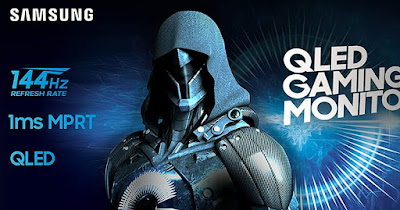
Monitors have gradually become more and more technological with the passage of time: from simple input devices on which to manage the operating system and programs, they have passed to true concentrates of technology with digital connection sockets, incredible refresh rates, high resolutions. , LED backlighting system and other advanced technologies, often reserved for those who play games or who work in the office. The best for those who play are the monitor da 144Hzable to guarantee a very high refresh rate, ideal for very fast-paced games or for action games.
If we use the PC a lot for video games or want a serious gaming monitor for our console, in the guide that follows we will show you how a 144 Hz monitor works and how to best use them. To make the guide complete we will also show you the best 144Hz monitors dedicated to games, so as to replace the old monitor with one of sure effect.
READ ALSO -> New Computer Monitor: What Features Should It Have
How a 144 Hz monitor works
A 144Hz monitor can display images at 144 frames per second (FPS), which is quite high for most games. Already considering 60 FPS as a great value for seeing games scroll smoothly across the screen, at 144 FPS games will become extremely fluid, especially in very animated scenes or with many characters on the screen moving.
When we connect a 144 Hz monitor to a PC or a console we will be able to take advantage of this refresh rate right away, since it is available on all modern operating systems (Windows 11, Windows 10 and the operating systems included in Xbox Series S / X and in PS5).
In addition to the native refresh rate, the monitor must also support the adaptive refresh rate, so that every game started can make the most of the high value shown on the display. Currently the most famous adaptive systems are NVIDIA G-Sync e AMD FreeSync Premiumavailable on the respective video cards.
READ ALSO: 60 Hz vs 120 Hz vs 144 Hz monitors what are the differences?
How to make the most of a 144Hz monitor
In order to make the most of a new monitor with a refresh rate of 144 Hz we will have to get one powerful video card as the MSI Radeon RX 6700 XT.
The MSI Radeon RX 6700 XT features 12 GB of GDDR6 video memory, RGB Mystic Light system, three DisplayPort outputs, one HDMI output, DirectX Raytracing (DXR) variable speed (VRS) support, AMD FidelityFX, AMD RDNA 2 architecture and dual fan dissipation system. With this card we can push the refresh rate to 144Hz with FullHD, 2K and 4K resolution support without any problem.
If we prefer an NVIDIA video card we can buy the ASUS ROG Strix NVIDIA GeForce RTX 3060 V2 OC Editionwhich boasts 12GB of GDDR6 video memory, PCIe 4.0 slot, one HDMI 2.1 port, DisplayPort 1.4a ports, RGB system, GPU Tweak II tool, Axial Tech Fan system and support for Ray Tracing and technology DLSSwhich boosts the refresh rate of any game via artificial intelligence.
If we want to examine other video cards compatible with the 144 Hz refresh rate we can also read our in-depth analysis on best video cards for PC.
Game console
Connecting a 144Hz monitor to a modern console (PS5 o Xbox Series S/X) we can only take advantage of the 120 FPS rate within the games.
If we are one of the lucky owners of these consoles and have a 144Hz monitor we will never use 144Hz, as this resolution is not supported by any console. In any case, we can still view the games at 120 FPS (where available), combining it with a FullHD resolution for both 4K resolution.
To learn more we can read our guide on how unlock HDR and 4K UHD on PS5.
144 Hz monitor features
To choose a good 144 Hz monitor we need to combine the information seen so far with that present in the following bulleted list:
- Update frequency: must be natively supported frequency of 144Hzincreasingly used in latest generation games and replicable even when we use the computer to watch a film or any audio / video stream.
- Backlight: now all models have LED panels to provide the light needed to reproduce details on LCD screens.
- Resolution and aspect ratio: 1080p is now the bare minimum, even if most of the latest generation monitors support a “wider” resolution, given that the aspect ratio for these monitors is almost always 21:9. To play and work, we try to focus on monitors with a resolution of 2560 x 1080 pixels or higher (such as QHD 3440 x 1440 pixels).
- Adaptive synchrony technologies: in the gaming field, support for NVIDIA G-Sync and AMD FreeSync Premium technologies must not be missing, which allow you to synchronize the display refresh rate with that obtainable from the video card, so as to avoid screen cuts and slowdowns during games .
- Response time: The response time indicates the time that passes between receiving the video signal and actually appearing on the display. The best monitors have response times of 4ms (milliseconds) or less.
- Connections: All monitors intended for gaming or work must have an HDMI port and a DisplayPort, so that any computer or dedicated video card can be connected.
If the chosen monitor has all these features we can buy it without problems, perhaps choosing from the models we have selected in the next chapter.
Best 144 Hz monitors
The first 144 Hz monitor we recommend you buy is the Samsung Monitor Gaming Odyssey G5.
This 32-inch monitor boasts a Curved display (1000R), maximum resolution 2560×1440 (WQHD 2K), HDR10 support, 144Hz support, 1ms response time, AMD FreeSync Premium support, HDMI input, Display port input, Audio input, Eye Saver Mode and Flicker Free system.
Another monitor to be used effectively in the gaming field is theLG 34GN73A UltraGear Gaming Monitor.
This 34-inch monitor features a 21: 9 Curved UltraWide display, IPS LED technology, support for HDR 10, maximum resolution 2560×1080, support for G-Sync Compatible and AMD FreeSync technology up to 144Hz, HDMI 2.0 (HDCP 2.2) input , Display Port 1.4 input, USB 3.0 HUB port and Flicker Safe system.
One of the best gaming monitors out there is the Xiaomi Mi Curved Gaming Monitor.
The Xiaomi monitor comes with a 34-inch diagonal, UltraWide aspect ratio, maximum resolution 3440 × 1440, Wide Color Gamut, Reduced Blue Light Emission, support for the 144 Hz refresh rate and support for AMD technology FreeSync Premium.
Another valid high-end gaming monitor that we can view is theItek Monitor Gaming GGC.
This 34-inch monitor boasts a Curved display (1500R), maximum resolution at 3440×1440 (Ultra WQHD), 21: 9 aspect ratio, HDR400 system, 144Hz refresh rate, 1ms response time, support for FreeSync and G technologies -Sync, HDMI input, Display Port input and Audio system.
One of the best 144 Hz monitors intended for gaming is without a doubt theASUS TUF Gaming VG32VQ.
On this 32-inch monitor we find support for WQHD resolution (2560×1440), Curved VA display, refresh rate up to 144Hz, 1ms response time, DisplayPort input, HDMI input, proprietary ELMB Sync system and support for AMD FreeSync technology.
Conclusions
These huge monitors can make a difference if we play the new gaming titles that support resolutions above 1080p and refresh rates above 60FPS; obviously we have to focus on a good dedicated video card, otherwise we might as well spend a little less and get a simple monitor.
READ ALSO: Buy 21: 9 wide monitor (ultra wide screen)

